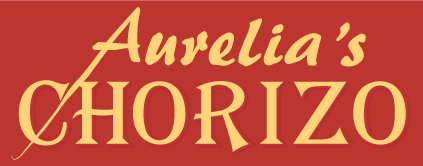
Tapas vs. Pintxos: A Delectable Dive into Spanish Culinary Traditions
When it comes to Spanish cuisine, two beloved culinary treasures stand out—Tapas and Pintxos. These bite-sized delights have become synonymous with Spain's vibrant food culture, sparking debates and even confusion among visitors. Are tapas and pintxos the same thing? How are they different, and why are they such an integral part of Spain's gastronomic landscape? In this blog, we’ll delve into the history, cultural significance, and regional variations of these iconic small-plate traditions while showcasing popular dishes (like those featuring Spanish Chorizo) in each category.
The Origins of Tapas and Pintxos
Tapas: A Royal Connection
The history of tapas dates back to ancient Spain but became prominent during the reign of King Alfonso X of Castile in the 13th century. Legend has it that the king ordered small snacks to be served with wine to prevent people from drinking on an empty stomach. The word "tapa" literally means "cover," and some say it originates from the practice of covering drinks with small plates to keep flies out.
Over time, tapas evolved from simple accompaniments like bread and cheese to a more elaborate culinary tradition, spanning ingredients and flavors from across Spain. They became a social and communal way to dine, emphasizing sharing and sampling multiple dishes.
Pintxos: A Basque Tradition
The word "pintxo" (also spelled "pincho") comes from the Spanish verb pinchar, meaning "to pierce." The term refers to the skewer or toothpick used to hold ingredients together, a defining feature of pintxos. Originating in the Basque Country in northern Spain, pintxos were inspired by the local penchant for bold flavors and artistic presentation.
Contrary to the communal aspect of tapas, pintxos are often individual portions meant to be eaten in one or two bites. Their popularity has spread beyond the Basque Country, but the art of pintxos remains rooted in this culinary heartland.
Cultural Significance: More Than Just Food
Tapas as a Way of Life
For Spaniards, tapas symbolize more than just a meal—they represent a culture of leisure and camaraderie. The social act of tapas-hopping, known as "ir de tapas", involves going from bar to bar, eating and drinking along the way. It’s an embodiment of Spanish friendliness, creating an atmosphere where strangers become friends over a shared table of patatas bravas, gambas al ajillo, or chorizo al vino (Spanish chorizo cooked in wine).
Pintxos as a Culinary Adventure
In the Basque Country, pintxos are more than food; they’re culinary art. Basque chefs take pride in blending local ingredients like bacalao (salt cod), txistorra (spicy sausage related to Spanish Chorizo), and idiazabal cheese into surprisingly sophisticated creations. The experience of eating pintxos often revolves around txikiteo, the Basque version of bar-hopping, where people move from tavern to tavern sampling exquisite pintxos and local cider or Txakoli wine.
Regional Highlights: Where Tapas and Pintxos Reign Supreme
Tapas: A Nationwide Phenomenon
While tapas can be found across Spain, certain regions have their own specialties:
- Andalusia (Southern Spain): Known for affordable and delicious seafood tapas such as boquerones fritos (fried anchovies).
- Madrid: Try the famous calamares a la romana (fried calamari) or chorizo al ajillo (spiced Spanish chorizo cooked with garlic) in bustling tapas bars near Plaza Mayor.
- Catalonia: Known for pa amb tomàquet, a toasted bread rubbed with ripe tomato, olive oil, and garlic.
Pintxos: The Crown Jewel of the North
The Basque Country, with its cities like San Sebastián and Bilbao, is the undisputed center of the pintxo tradition. Bars are known for featuring counters laden with colorful displays of:
- Gilda: Anchovies, olives, and pickled peppers skewered together for an explosion of taste.
- Foie Gras Pintxos: Served with caramelized onions or apple compote on crispy bread.
- Txistorra y Pimiento: Spicy sausages (akin to small Spanish chorizo) paired with roasted red peppers.
- Txangurro: Spider crab served in unique combinations.
While pintxos are most associated with the Basque regions, similar traditions can be found in Navarre and La Rioja.
Differences Between Tapas and Pintxos: A Quick Comparison
| Feature | Tapas | Pintxos |
|---|---|---|
| Origin | Nationwide (especially Andalusia) | Basque Country |
| Serving Style | Often shared; can be served on their own plate | Individual; typically skewered with a toothpick |
| Size | Can range from small to medium | Typically bite-sized |
| Eating Style | Communal, social | Culinary experimentation |
| Beverage Pairings | Wine, beer, or sangria | Txakoli wine, cider |
Popular Tapas and Pintxos Dishes to Try
Must-Try Tapas:
- Patatas Bravas: Crispy potatoes with spicy tomato sauce and aioli.
- Tortilla Española: A classic Spanish omelet with eggs, potatoes, and onions.
- Chorizo al Vino: Spanish chorizo sausages simmered in red wine, bursting with smoky and savory flavors.
- Gambas al Ajillo: Sizzling garlic shrimp served with crusty bread.
Must-Try Pintxos:
- Bacalao al Pil-Pil: Salt cod cooked with garlic and olive oil.
- Pintxo de Morcilla: Blood sausage served with caramelized onion.
- Txistorra y Pimiento: Mini spicy sausages related to Spanish chorizo, combined with roasted peppers.
- Foie Pintxo: Foie gras on crusty bread with a tangy compote.
Conclusion: A Tale of Two Culinary Icons
Whether you’re wandering through the bustling streets of Seville or exploring the pintxo bars of San Sebastián, the choice between tapas and pintxos doesn’t need to be exclusive. Both offer an inside look into Spain’s rich culinary landscape, showcasing local flavors, traditions, and creativity.
So, why not embrace both? Tapas provide a warm welcome into Spain’s communal dining culture, while pintxos offer a gourmet adventure into regional delicacies. From patatas bravas to Gildas, and from Spanish chorizo stews to artisanal pintxos, each dish tells a story, inviting you to taste your way through Spain, one bite at a time.
